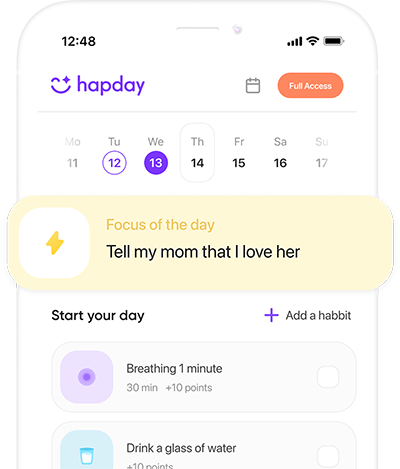Table of Contents
- Understanding Burnout and Fatigue
- The Science Behind Burnout and Fatigue
- Overcoming Burnout and Fatigue
- Role of Employers in Combating Burnout
- The Role of Technology in Managing Fatigue
- Personal Stories: Overcoming Burnout
- Conclusion: Take Control of Your Life
- References
Understanding Burnout and Fatigue
What is Burnout?
Burnout signifies a deep physical, emotional, and mental exhaustion, the by-product of chronic stress. When life’s demands outpace your ability to cope, burnout takes root. Remember that Gallup study back in 2019? It showed 76% of folks feel burnt out at work occasionally, with a whopping 28% regularly hitting that wall.
Symptoms of Burnout
When burnout arrives, it brings along…
- Endless fatigue and restless nights
- A nosedive in output and enthusiasm
- That gnawing, cynical view of work
- Those nagging headaches or queasy stomachs
- Anxiety and, sometimes, the blues
What is Fatigue?
Fatigue—a relentless weariness that often encompasses both body and mind. Unlike burnout, a good rest usually helps.
Symptoms of Fatigue
Fatigue can look like…
- Constant drag in your step, nonstop sleepiness
- Head spins and dizzy spells
- Muscles that just won’t stop aching
- Reactions slowed to a crawl
- Fuzzy judgment, muddled decisions
The Science Behind Burnout and Fatigue
Psychological Factors
Certain personality quirks, like aiming for nothing less than perfection or seeing the glass half-empty, can inadvertently feed burnout. A piece in the Journal of Occupational Health Psychology even suggested that the driven, Type A crowd might find themselves more vulnerable.
Biological Factors
Cortisol and adrenaline—the usual suspects when stress hits. When they’re thrown off balance, that’s when burnout and fatigue come knocking. According to the American Psychological Association, stress isn’t just mental; it hampers immunity, disrupts digestion, and ups heart disease risks.
Environmental Factors
Workplace settings are not just backdrops but active players in this drama. Heavy workloads, lack of control, and limited rewards can spike stress. The World Health Organization once flagged that burnout touches 23% of workers due to such environmental stressors.
Overcoming Burnout and Fatigue
Step 1: Identify the Causes
To tackle burnout and fatigue, first pinpoint their origins. A simple journal to record daily stressors and feelings can unveil the patterns you might be missing.
Step 2: Practice Self-Care
Self-care isn’t just a buzzword—it’s your first line of defense. Here’s how:
- Exercise Regularly: Endorphins. They’re nature’s mood lifters.
- Healthy Eating: Keep the diet rich and balanced. It’s your body’s fuel.
- Adequate Sleep: Don’t skimp on those 7–9 hours. Sleep repairs much more than you think.
Step 3: Set Boundaries
“Learn to say no.” Such a small phrase, yet crucial for maintaining energy focus on true priorities aligned with personal values.
Step 4: Seek Support
Reaching out does wonders. Family, friends, or mental health pros can provide support and perspective. A Journal of Applied Psychology study endorsed that social buffers against workplace stress can indeed ease burnout.
Step 5: Mindfulness and Meditation
Mindfulness isn’t just for monks. Harvard highlighted that meditation could iron out stress and even bolster gray matter!
Step 6: Reevaluate Goals and Priorities
Times change, and so should your goals. Periodic reassessment ensures alignment with what truly matters. Consider career shifts if current paths no longer resonate.
Role of Employers in Combating Burnout
Creating a Supportive Work Environment
Employers, the ball’s partly in your court. A positive workplace lowers the burnout odds. Consider:
- Flexible Work Arrangements: Remote work or flex hours ease tensions and boost satisfaction.
- Recognition and Rewards: A shout-out here and there means more than you know.
- Professional Development Opportunities: Show employees they matter by offering growth paths.
Implementing Wellness Programs
Yoga? Mental health workshops? All these activities aren’t just add-ons—they’re stress reducers and balance restorers.
The Role of Technology in Managing Fatigue
Health and Wellness Apps
Apps could be your guide. Hapday, for instance, offers mood tracking, meditations, and plans tailored to wellness.
Wearable Technology
Trackers that monitor sleep, steps, and stress can reveal health insights—steering you toward wiser choices.
Personal Stories: Overcoming Burnout
Real-life tales of triumph over burnout can light the way. Biographies or podcasts featuring those who’ve walked the path might offer the inspiration and hope you seek.
Conclusion: Take Control of Your Life
Burnout and fatigue—though intricate—aren’t insurmountable. Grasp the multifaceted causes, implement the strategies herein, and you’ll find motivation unlocking once again. It’s about self-care, respecting boundaries, seeking help… your goals must synchronize with your very essence for lasting well-being.
In essence, to combat burnout and fatigue, start by acknowledging symptoms and getting to the heart of the matter. Shift habits in healthier directions and reach out when you need it. Hapday’s app could just be the companion you need on this journey. Uncover a fresher, invigorated you with their guidance.
References
- Gallup. (2019). Employee Burnout: Causes and Cures.
- American Psychological Association. (2020). Stress Effects on the Body.
- World Health Organization. (2019). Burn-out an “Occupational Phenomenon”: International Classification of Diseases.
- Journal of Occupational Health Psychology. (2020). The Role of Personality in Burnout.
- Harvard University. (2011). Mindfulness Practice Leads to Increases in Regional Brain Gray Matter Density.


This article really opened my eyes to the signs of burnout! I’ve been feeling so drained at work lately, and I didn’t realize it could be burnout creeping in. The self-care steps you mentioned, especially setting boundaries and practicing mindfulness, are definitely things I’m going to start implementing. Thanks for sharing!
I completely relate to that! It’s easy to overlook the signs when we’re caught up in our daily routines. Have you tried any specific mindfulness techniques yet?
I think it’s great that you’re taking these steps! Remember that even small changes can make a big difference over time!
Oh great, another article telling us we just need to ‘practice self-care’ like it’s that simple! Sometimes it feels like no amount of yoga can fix a toxic work environment. But hey, good luck with those meditation apps!
I get where you’re coming from, but maybe it’s worth trying different approaches? Sometimes combining self-care with workplace changes might help.
‘Understanding Burnout and Fatigue’ is such an important topic! I particularly found the statistics alarming—28% regularly feeling burnt out? That’s a huge number! Employers really need to step up their game in creating supportive environments.
‘Exactly! Creating flexible work arrangements seems like a no-brainer, yet so many companies still don’t prioritize employee wellness.’
‘So basically, if you’re tired all the time, just take a nap and everything will be fine? Sounds like a plan! Seriously though, it’s refreshing to see this topic getting the attention it deserves.
Haha, right? If only life were that easy! But naps do help… sometimes!
True! The struggle is real; finding balance between work and personal life is hard!
I’m always on the go trying to achieve more at work…but lately I’ve noticed myself feeling overwhelmed. This article was an eye-opener about how important it is for us high achievers to recognize burnout before it’s too late.
That’s so true! High achievers often push themselves beyond limits without realizing until they crash.
This article brilliantly highlights the often-overlooked issue of burnout and fatigue in today’s fast-paced work environment. I appreciate how it breaks down the symptoms and offers practical steps for recovery. It’s refreshing to see an emphasis on self-care and mindfulness. It’s essential for both employees and employers to recognize these signs and take action.
While I understand the importance of discussing burnout, I find this article somewhat superficial. It touches on symptoms but lacks depth in addressing the systemic issues that lead to burnout in the first place. Employers often fail to make substantial changes despite knowing about these issues, so just talking about it isn’t enough.
This piece provides a comprehensive overview of burnout and fatigue, backed by research from reputable sources. The statistics shared, like the Gallup study from 2019, lend credibility to the arguments presented. I particularly found the section on self-care strategies useful; they are practical suggestions that anyone can implement immediately.
Does anyone else find it ironic that while we read about burnout, we’re often consuming content at a relentless pace? This article is a perfect example of how we are encouraged to ‘take control’ yet surrounded by factors that keep us trapped in cycles of stress. Are we really supposed to meditate our way out of corporate madness?
‘Practice self-care,’ they say! As if I can just sip herbal tea and do yoga while my inbox explodes! What’s next? A bubble bath will solve my work problems? Sure, let’s all become zen masters while juggling deadlines like circus performers!
‘Employers need to create supportive environments’—how original! It’s easy for articles like this to suggest solutions without acknowledging that many companies prioritize profits over people. Until there is real accountability at corporate levels, discussions about wellness seem futile.
‘Mindfulness isn’t just for monks.’ Well said! We need more articles that promote mental health in relatable terms. It’s heartening to see guidance on setting boundaries—it’s something many struggle with yet feel guilty about prioritizing their well-being.
‘Seek support,’ as if it’s that easy! Mental health resources are often scarce or inaccessible for many people dealing with burnout, especially in lower-paying jobs where stress is high but support systems are nonexistent.
I love how technology is highlighted as a tool for managing fatigue! Wearable tech can be life-changing—I mean who doesn’t want their watch reminding them when they’re stressed? But let’s be real; sometimes you need more than a gadget telling you to breathe!
Finally! An article that acknowledges burnout with some humor sprinkled throughout—like advocating yoga as if it could make deadlines disappear! At least now I have some giggles along with tips on tackling stress; I’ll take both!